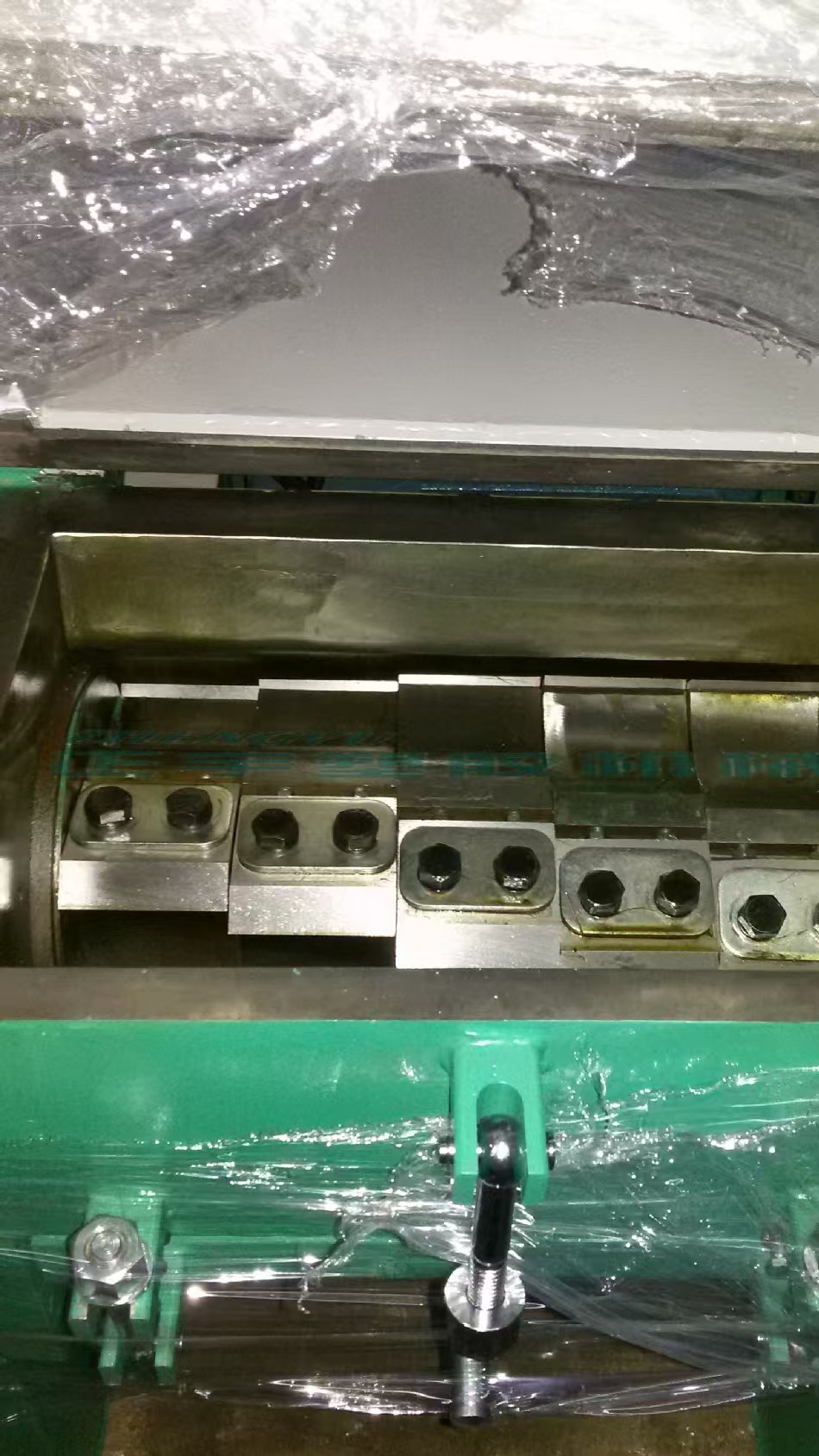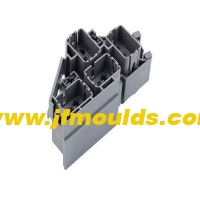The causes and solutions of poor welding in injection molding, product cracks and product deformation
The causes and solutions of poor welding in injection molding, product cracks and product deformation
Auto Mould_Taizhou Jiefeng Mould Co.,Ltd. (jfmoulds.com)
| Product defect | Possible reasons | Solution | |
| Poor welding | 1.The form of the gate system is improper, the gate is small, the runner is small and the flow path is long, the resistance to material flow is large, and the material temperature drops rapidly. 2. The material temperature or mold temperature is too low. 3. Plastic has poor fluidity. When cold materials are mixed in, the cooling speed is fast. 4. There is moisture or lubricant in the mold, excessive inflation of the molten material, and excessive release agent. 5. The injection pressure is too low or the injection speed is slow. 6. The shape of the product is poor and the wall thickness is uneven, causing the molten material to converge at the thin-walled areas. 7. Improper cooling system of the mold or poor exhaust. 8. The plastic is mixed with immiscible materials, oils or has no proper demolding. | 1.Improve the gate system, increase the gate or runner, reduce the flow resistance and material flow resistance, and maintain the temperature range of the material. 2. Increase the temperature of the glue melt cylinder and the die. 3. For materials with poor fluidity, prevent cold materials from being added to accelerate cooling and affect the flow rate. 4. Check the exhaust holes, dry the inner walls of the die, or use plastics, additives, etc. in accordance with the process and technical standards. 5. Increase the setting values of injection pressure and speed. 6. Improve the shape of the product or increase the injection molding cycle time. 7. Check the cooling system and the condition of the exhaust holes. 8. Check if the plastic is free from contamination, clean the mold wall, and apply an appropriate mold release agent to crack the product. | |
| Product crack | 1.The plastic is contaminated, poorly dried or contains volatile substances. 2. A large proportion of plastic and recycled materials mixed together causes excessive directionality of plastic shrinkage or uneven distribution of fillers. 3. Inappropriate demolding design, thin product walls, small demolding slopes, sharp corners and notches, which can easily lead to stress concentration. 4. Improper positioning of the ejector pin or ring, or improper forming conditions, excessive stress, and poor ejection. 5. The temperature of the tool and die is too low or uneven. 6. The injection pressure is too low and the injection speed is too slow. 7. The injection time and holding pressure time Settings are too short. 8. The cooling time is not properly adjusted, either too long or too short. The cooling of the products after demolding or post-treatment is uneven, or the mold release agent is used improperly. | 1.Check whether the plastic is contaminated or adulterated, etc. 2. Strictly control the proportion of plastic recycled materials and waste materials added to ensure that the plastic can be well plasticized. 3. Modify the die design to eliminate small slopes, sharp corners and notches. 4. Adjust and install the ejector pin device to ensure that the ejector pin can smoothly push out the product without any collision. 5. Adjust the temperature of the die and tool to maintain it at normal or increase it. 6. Increase the set values of the injection pressure and speed parameters. 7. Add the setting of parameters for injection time and holding pressure time. 8. According to the specific conditions of the products, adjust the cooling time reasonably and use the mold release agent properly to ensure that the cooling state of the products is uniform after demolding. | |
| Product deformation | 1.Uneven plasticization of plastic, excessive or insufficient feeding and filling. 2. The gate positions are improper, asymmetrical or insufficient in number. 3. The mold strength is insufficient, it is prone to deformation, the precision is not high enough or it is damaged, the positioning is unreliable or the ejection position is improper. 4. The demolding system is poorly designed or improperly installed, resulting in uneven force distribution during demolding. 5. The plastic material temperature is too low, the mold temperature is low, the injection nozzle aperture is small, and the shear stress is large when the injection pressure speed is high. 6. When the material temperature is high, the mold temperature is high, the filling effect is excessive, the holding pressure and feeding are too large, and the injection pressure is high, the residual stress is too large. 7. Uneven thickness of the product, improper parameter adjustment, uneven cooling or uneven shrinkage. 8. The cooling time parameter is set too short, causing deformation of the demolded products. The deformation of the products is not properly treated or stored. 9. Uneven mold temperature, uneven cooling, slow cooling of the thick wall parts, fast cooling of the thin wall parts, or rapid cooling of the protruding parts of the plastic part The concave part cools down slowly. | 1.Adjust the reclining position of the screw to reduce the feeding, lower the injection pressure or increase the pressure 2. Change the gate or control the flow rate at the gate. 3. Inspect or modify the mold or install and correct it to ensure accurate positioning, good precision and appropriate ejection position. 4. The design can be modified or reinstalled and debugged to ensure uniform force distribution when the product is demolded. 5. Increase the temperature of the melt cylinder and the mold, and reduce the injection pressure and speed to prevent excessive shear stress. 6. Reduce the temperature of the melt cylinder and the mold, decrease the injection pressure and hold pressure for feeding to prevent excessive residual stress. 7. Check whether the mold is heated evenly, or modify the mold to make its thickness uniform, or adjust the parameters reasonably to make the shrinkage uniform. 8. Increase the setting value of the cooling time parameter, adjust other parameters, strengthen the post-treatment process and ensure reasonable storage and stacking to avoid external factors Deformed by force. 9. Adjust the mold cooling system to control and evenly distribute the mold temperature, avoiding uneven cooling causing uneven temperature, uneven shrinkage and deformation of the plastic part. |
Commodity Mould_Taizhou Jiefeng Mould Co.,Ltd. (jfmoulds.com)

Related News
The causes and solutions of bubbles, mold sticking and gate sticking in injection molded products
2025-07-31
The causes and solutions of bubbles, mold sticking and gate sticking in injectio...
The mold case integrates lines and exposed white
2025-08-04
The mold case integrates lines and exposed whiteMold fusion line:Phenomenon: The...
The "Shaping Master" Hidden in Daily Necessities
2025-07-17
The "Shaping Master" Hidden in Daily Necessities In today's industrial produc...
Surface treatment of molds
2025-07-26
Surface treatment of molds1. Common surface treatment processes The purpose o...
The grooves of the mold's injection air inlet, the surface light and shadow, the scratches on the grooves and the size of the screw holes have increased
2025-08-13
The grooves of the mold's injection air inlet, the surface light and shadow, the...
The causes and solutions of poor welding in injection molding, product cracks and product deformation
2025-07-30
The causes and solutions of poor welding in injection molding, product cracks an...





